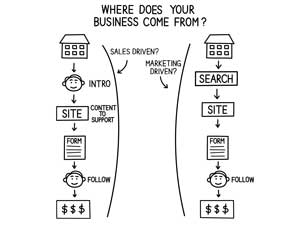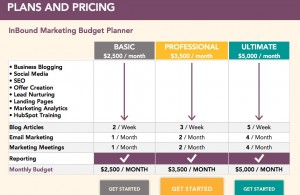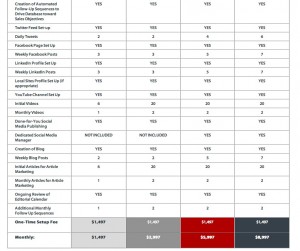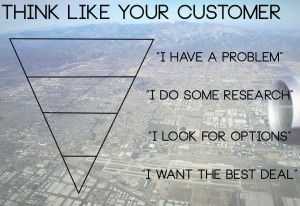The Case for Publishing Prices

M.S.R.P
This week I was presented with two consulting practices that had published rates and services as packages on their sites. This discussion is anecdotal, so bear with my vagaries as I work through the issue.
In doing their due diligence before proceeding on a project, I was presented with links to sites like these:
I’m not privy to the inner working of these two fine companies, but I am intimate with the process that I’m going through with the clients that referred me.
The selling process is relatively simple. (to make sure we’re on the same page, I start with “help clients succeed”, define the opportunity, put measures in place, agree on the value, evaluate approaches to solving the problem and then begin to take action. Just like your process but in my lingo.)
I say it’s simple because in the end, both parties want the same thing. The company wants to succeed. I want to succeed. After that it gets messy.
The messiest part of the process is talking money. Everyone gets excited. You can feel the electricity. Sweaty palms. Hot breath. Eyes darting too and fro. You know how it is.
Even though most think about the dollars/negotiating at the end of the process, it actually occurs in two parts of the sales process. Early on the discussion is all about ballparking. You’ve heard the phrase “in the ballpark” right? Making sure both parties are on the same page. Making sure that we’re using the same terms and extracting the same meanings. It’s another way of “defining”. The other time the money comes up is at the end of the process when we’re finalizing the “value”. (usually the decision is made, the value agreed on and now it’s about best price.)
Revisiting the simplified “Decision Making Process” that I referred to in my Why Your Website isn’t Driving New Business paper and the Building a Framework for Evaluating New Marketing Ideas webinar. (shameless plug)
Money shows up in the middle when we’re roughing out options to solve the problem in questions like, “How much do you think this will cost to fix/build?” It’s a ballpark question. There’s a million answers. . .most depend on the value of the difference between your current state and the desired state, but there are other factors as well. Timing. People.
Money also shows up at the bottom of the funnel in questions like, “All we have in the budget is X” or “We just don’t see the value”. It’s logistics. It’s negotiating. Making sure you get the most value for the investment.
Are we on the same page here?
Now, back to publishing prices.
What role does it serve? I say it serves the role of ballparking.
We’re going through a fundamental shift in how information is disseminated. The inbound marketing evangelists will tell us that something like 60% of a problem is solved by self research rather than reliance on a salesperson or trusted adviser. I don’t know if those numbers are accurate or not, but anecdotally I do way more pre-purchase research than ever. Especially to learn terminology and understand things like “how much is this going to cost me?”
The proponents of not publishing pricing will say things like “Don’t publish prices because bad things happen, like people not calling.” I get it and I agree that that sounds bad. I’d hate for someone to visit this site, see examples of project fees and then walk away without contacting me . . . because it’s natural to think “I could have helped them if they only understood what I really did.” If that’s the truth, then one solution is to not publish prices. Agreed.
Another solution is to help give them what they are on the site for: more information to help them make a “good decision”.
Right? They are looking for information. They didn’t click on Contact Me, they clicked on Pricing. What else can we give them to help with their problem? What other information do we have on Resources? Do we have information on Timing? Any information on what they’ll need for People?
In regards to the companies that I’m working with, we’re through the first money issue. We ballparked and agreed that we’re on the same page when it comes to the resources needed to solve the problem. Now we’re into the Value question where the money people are asking, “Is this the best price for the service?”
It’s a good question. Adhering to my initial step in the sales process, I’ll work to help them succeed. I want to help them make a good decision. Even if it’s not working with me. It’s painful to think that I wouldn’t be involved, but it’s real. If everyone’s not on board, the friction shows up somewhere down the road.
So, as a consultant, will I publish my prices? Good question.
Here’s my problem:
I don’t know how much it will cost.
I don’t have many companies reaching out to me via my website. I get referrals or I am calling to introduce myself to interesting people. This makes a difference. My sales cycle is more seller-driven than marketing-driven.

Even though I am more sales driven, with the work I do, I have examples of other companies in similar situations, trying to get similar results, and can tell prospects they are investing $X or $Y to get results. I can find a clever way to put these on my site and answering the follow up question I ask, “Do you see yourself falling into that range?” If they say no, I won’t know it. If they say “sounds right” then I’ve helped in some way shape or form and they may reach out. Help people make good decisions, right?
Pricing via Case Studies is probably the way to go for the work I do with versus a pre-configured package. Someday I’ll write up some Pre and Post project case studies that will help a visitor to the site understand my pricing structure.
Good stuff.



